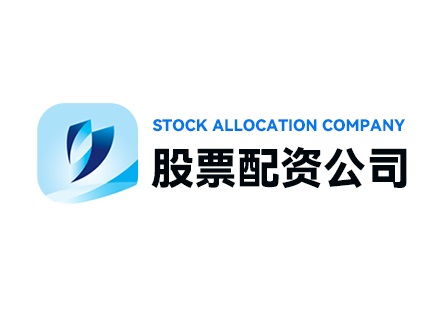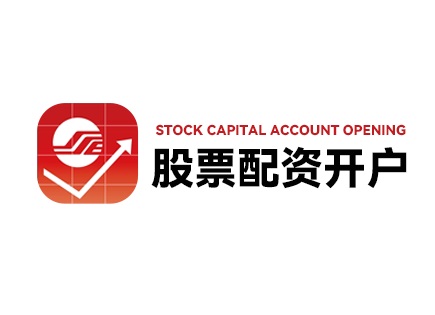 配资平台_配资炒股平台/股票配资行情/配资炒股投资
配资平台_配资炒股平台/股票配资行情/配资炒股投资
资本运作的艺术:如何在市场中游刃有余
Imagine you’re standing on a crowded trading floor, the air thick with tension and anticipation. Every tick of the market sends ripples through the crowd, yet a few individuals, seemingly calm and collected, navigate this chaos with eerie precision. What separates these seasoned investors from the novice traders? It all boils down to the efficiency of capital operations—a craft that blends art and science.
Let’s dive into how the efficiency of capital operation manifests in today’s volatile market landscape. A study by the CFA Institute reveals that firms with high capital efficiency tend to outperform their peers, yielding returns up to 30% higher over a five-year period (CFA Institute, 2021). This sets the stage for a critical discussion on market evaluation—how do we assess these operators? Market assessments often hinge on transparent fee structures and transaction costs, which can vary significantly across brokerage platforms.
Consider this: fee transparency is a hallmark of credible platforms. Investors are increasingly savvy, opting for services that demystify charges. A report from Morningstar indicates that platforms with transparent fee structures see a 15% higher customer retention rate compared to those that don’t (Morningstar, 2022). This implies that as investors become more aware of the hidden costs associated with trading, they’ll gravitate towards those who offer clarity and honesty.
Now, let’s tackle the issue of transaction costs. Did you know that an overestimation of these costs can lead to subpar investment decisions? According to research published in the Financial Analyst Journal, even a slight misunderstanding of fees can result in losses upwards of 2% annually (Financial Analyst Journal, 2020). Investors need to educate themselves continuously about the true cost of trading.
In the realm of experience sharing, the power of engaging in conversations with other traders cannot be overstated. Forums, webinars, and social media groups provide invaluable insights. Much like a bustling market, these platforms allow for the exchange of diverse strategies and perspectives. Every trader’s journey is unique but learning from others is paramount.

When it comes to trading strategies, understanding your psychological triggers is just as important as analyzing stock trends. A holistic approach that marries technical analysis with emotional resilience can lead to smarter decision-making. For instance, backtesting strategies on historical data allows traders to form a clearer picture of potential outcomes, helping to mitigate risk.
As we navigate these discussions, we must not forget the overarching question: how do you balance the art and science of trading? Are you focused solely on numbers, or do you allow for intuition to guide you? This journey requires both analytical rigor and instinctual agility. So, as we close the curtain on this exploration of capital efficiency and market dynamics, let’s open the floor for discussion.
What strategies have you found most effective in your trading endeavors? Have you ever felt overwhelmed by the complexity of fees? How do you ensure you’re trading with transparency in mind?
Frequently Asked Questions:
1. What is the importance of capital efficiency in stock trading?

2. How can one determine if a trading platform is transparent with their fees?
3. What are some common mistakes investors make regarding transaction costs?
- 05-20资本运作的艺术:如何在市场中游刃有余
- 05-19解析配金宝:股票配资平台的全景透视
- 05-19股票配资平台全方位综合分析:机遇与挑战并存
- 05-19选择优质股票配资平台的全面指南与策略分析
- 05-19掌握资本的未来:股票配资平台全景透视
- 05-19操盘手的秘密武器:股票配资带来的奇迹与挑战
- 05-19掌握拉萨股票配资:从盈利心态到行情评判的全面解析
- 05-19探索股票配资平台的选型与市场动态分析
- 05-19江苏股票配资交易平台全景解析:技巧、资金、服务与策略的深度探讨
- 05-19鸿岳资本:追寻市场波澜中的智慧之光
- 05-19探索华融股票配资平台:风险与收益的平衡艺术
- 05-19电力行业的潜力与风险:漳泽电力之路的深度剖析
- 05-19揭示股票配资平台的陷阱:深度解析投资心理与回报优化
- 05-19蜒简配资:全面解析股票配资平台的运作与风险管理
- 05-20如何选择优质股票配资平台:全面分析与风险防范
- 05-20深度剖析天牛宝股票配资平台:情绪调节与风险管理的全景探讨
- 05-20驾驭市场风云:解密正规配资炒股的机遇与挑战
- 05-19智能投资时代:用科技引领炒股配资的未来
- 05-19深入探讨合法正规的股票配资平台:策略与风险的平衡
- 05-19深度解析股票配资平台:操作模式与风险收益的全方位分析
- 05-19掌控资本的魔法:如何在股市风云中翻腾利润
- 05-20探索丰都股票配资:盈利技巧与资金运作的全面解析
- 05-19驾驭股市波动:配资策略与盈利心态的深度解析
- 05-19让投资更智慧:揭秘正规配资平台的全方位攻略
- 05-19股票配资的全景视角:如何在复杂市场中找到安全与收益的平衡?
- 05-20探索潜力与风险:圣邦股份的创新之路与市场解析
- 05-19在波动中掌控风险:如何实现高效资金配置与资产管理
- 05-19解锁网络配资平台的秘密:从交易规则到风险管理,带你领略全景投资之路
- 05-20投资新视角:股票配资平台的深度探讨与收益策略
- 05-19股票配资平台的合法性探讨与全面解析
- 05-20炒股配资:在风云变幻的市场中,如何做到稳健获利?
- 05-19深入解析洛宁股票配资平台的投资逻辑与操盘技术
- 05-19智慧投资:探索股票交易平台的未来之道
- 05-19智慧投资:全面解析配资与炒股的未来机遇
- 05-19在风口上,如何玩转炒股配资:你的灵活操作指南
- 05-20探索广瑞配资:如何在股海中游刃有余?
- 05-20揭秘农业银行601288:资金利用的秘密武器与市场表现的背后故事
- 05-19股票配资之路:智者的投资指南
- 05-19股临天下:全面解析股票配资与投资策略
- 05-19股票配资新风潮:揭开快速入市与杠杆交易的神秘面纱
- 05-20线上股票配资平台的综合评析与操作建议
- 05-19网上配资:机遇与风险并存的投资新境
- 05-19深度解析杨方配资平台:全方位操作指南与风险管理
- 05-19智慧投资之路:股票配资平台的全方位剖析
- 05-19掌握市场脉搏:如何在股市中稳健前行
- 05-19全面解析股票配资平台的市场动态与策略
- 05-20全面剖析铭创配资:从实操经验到操盘技巧的深度探讨
- 05-19资本春风吹过的股市:配资台网站的全景透视
- 05-19股票配资平台的全景透视:决策、管理与风险控制
- 05-19资本腾飞:如何在波动的市场中稳操胜券